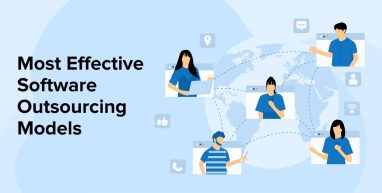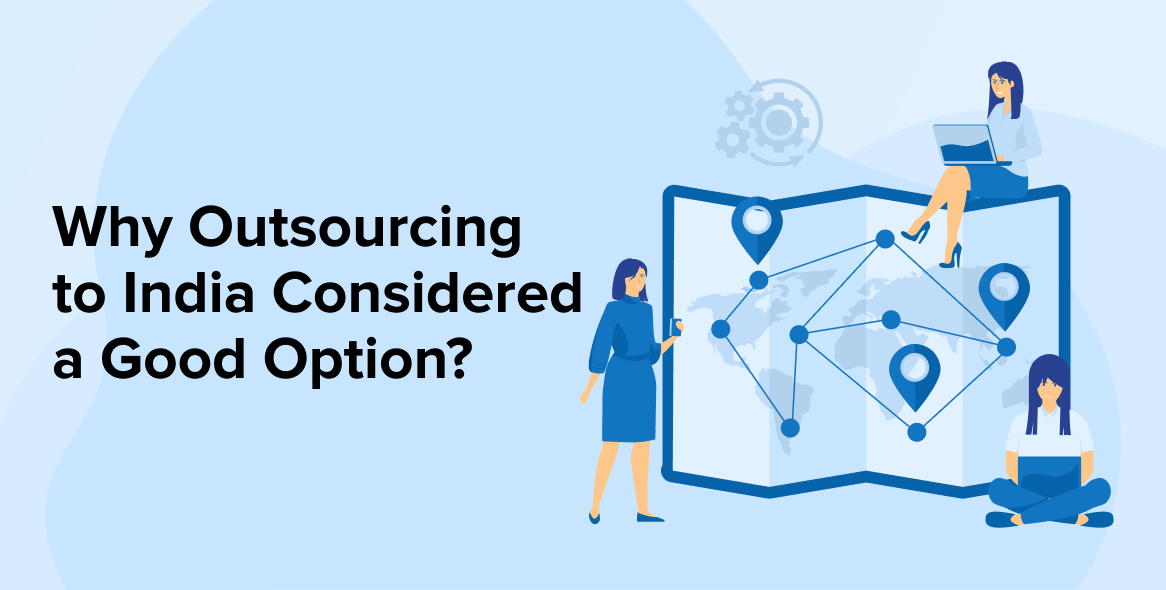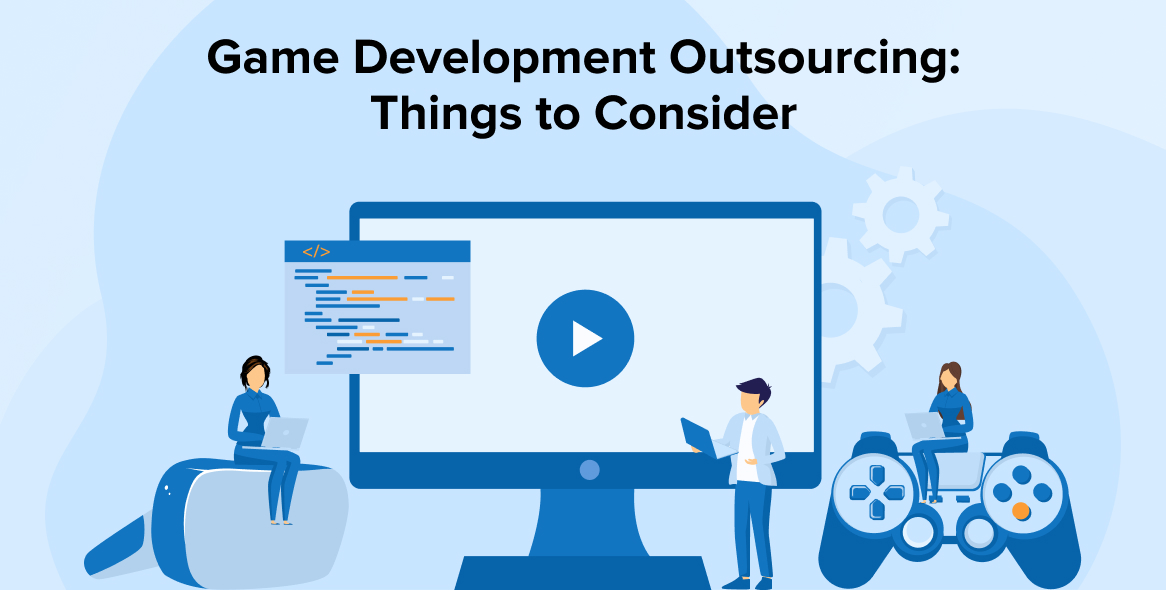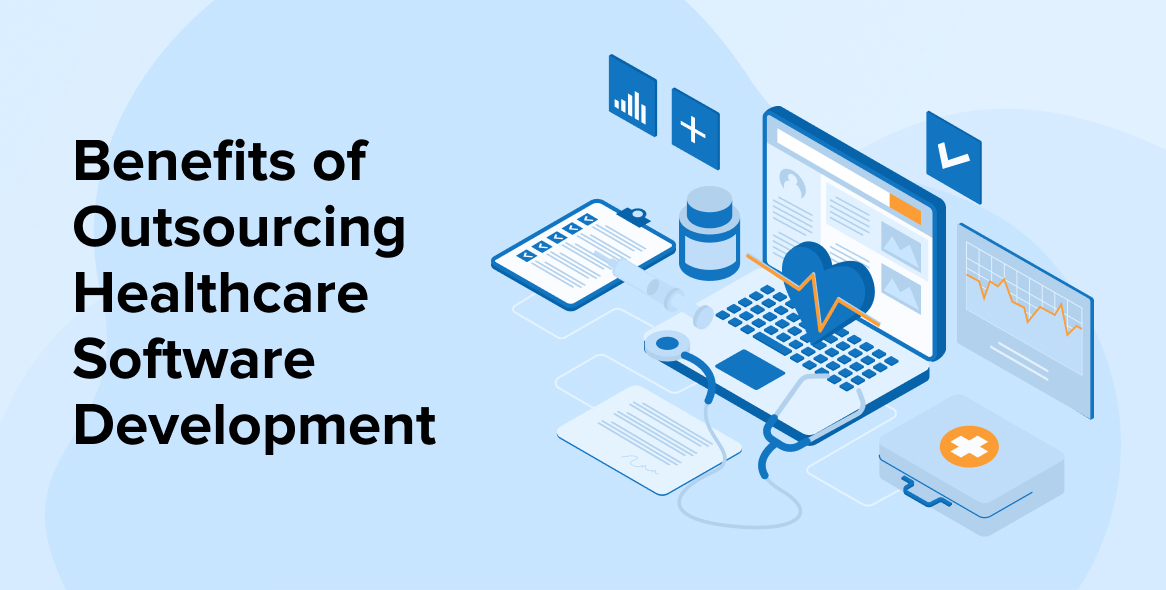
Software outsourcing has been in trend for like some decades now. It has never been out fashioned because of the benefits that Outsourcing has been offering to global businesses. The need for outsourcing services arises when businesses start having in-house development challenges, delivery delays, untested apps, bugs and flaws, slower growth, and several other similar reasons. Still, businesses postpone their decisions to partner with a software outsourcing company because of many reasons. One of the strongest reasons is that they don’t understand the Software Outsourcing Model. This blog is a revelation of how and which all Software outsourcing engagement models offer what facilities and is suitable in which business scenarios.
There are other methods of engaging staff augmentation, dedicated teams, and project-based outsourcing. This blog is completely focused on the types of outsourcing models that would benefit businesses and bring profitable business outcomes. There is a reason why we decided to come up with this kind of blog many businesses are not sure if they should go for software outsourcing development or not.
Many firms and entrepreneurs realize halfway through a project that the engagement model they picked with their outsourcing partner was not optimum, and in the worst-case scenario, it was not functioning at all. And, in the majority of situations, changing the model halfway through is neither financially feasible nor straightforward from a process standpoint.
In this, we will be discussing 4 types of outsourcing models in depth and will be understanding what are their strengths and weaknesses for each type of outsourcing model.
1. Time & Material Model
The time and material model is one of the most common and straightforward outsourcing models. Clients choose from a variety of resources, each of which has a distinct hourly dollar fee. Many times, providers may recommend a resource type based on their previous experience with comparable projects, but customers will ultimately decide what combination of resources is required. In fact, in the software development industry, it is one of the conventional methods used to develop and deploy applications. It basically charges you on the basis of the utilization of the material in a specific time period which is the time invested. You can modify the process and the changes will be affected accordingly.
1.1 Pros of Time and Material Model
Following are the advantages of time and material model:
1. Improved Turnaround Time
The “Time and Material” approach employs a continuous change methodology in which problems are identified early on and costs are meticulously calculated to fulfill the end business goal.
2. Dynamic Change
Because of the fast-paced nature of business, every company must be adaptable and make changes quickly. Businesses may easily execute changes in the next iterative model for technology or any resources using this “Time and Material model.”
1.2 Cons of Time and Material Model
Following are the disadvantages of time and material model:
1. Ruled by Constraints
There are always time and Material constraints involved in the method. Because the Time & Material approach places a greater emphasis on time, your development requirements will diverge. Although the total cost may exceed your budget, you may halt the services whenever they are satisfied with the results.
2. Time Does Not Guarantee Results
This approach is often used on an hourly, weekly, or monthly basis, and after the goal has been accomplished, no firm will use the same method again.
2. Dedicated Development Teams
As per the name, you now know what they mean. It simply means when you hire a complete software development team from an offshore business to work only on your project under this software outsourcing approach. As the product owner, you have direct authority over them, just like internal workers. You may also choose the entire team structure based on your needs, such as the number of software developers, senior developers, architects, testers, or project managers. If you have specific needs then you can ask your outsourcing provider, they usually cooperate and fulfill the needs.
Now that you know who is the dedicated team, you can participate in the interview, assess the performance, and even influence who joins your team. This approach allows you to be a part of the hiring process since they are working on your business project
2.1 Pros of Dedicated Development Team
Following are the advantages of dedicated development team:
1. Right Set of the Team Hired
The appointment of these specialist development teams is done with great care, and the experience and skill of these individuals is never questioned. These teams pay attention to the smallest things and can tell you if you’ve overlooked something crucial.
2. Definite Results of Strategies
This result-oriented strategy provides comprehensive insight on frequent task updates, allowing a company to make the best decision possible and prevent disputes.
2.2 Cons of Dedicated Development Team
Following are the disadvantages of dedicated development team:
1. Cost Concerns
If you engage a specialized development team for a smaller project, it might be a pricey investment because the effort will be higher. This engagement strategy is apt for larger projects and enterprises.
2. Doesn’t Fit All Custom Development Needs
If your rival has recruited a dedicated development team, the outcomes may not be the same if you employ the same staff blindly. A team selected is based on custom business requirements.
3. Fixed-Price Model
Among the several types of outsourcing models, this outsourcing model is one of the most risk-free, efficient, and popular. This model is all about paying a set amount of money for a given scope of work within a set length of time, as the name implies. The customer is essentially risk-free in this sort of approach because the establishment of the project scope is immediately at the start. They may be confident that, whatever happens, they will receive software with predefined features and performance at the end of a given period and for a predetermined amount of money.
3.1 Pros of Fixed-Price Model
Following are the advantages of fixed-price model:
1. Transparent Model
This extremely amiable technique is based simply on plans and timetables, and milestones completed during the software development process. You get all the updates of achievements that are in a loop or completed on achievements on a regular basis. It is most preferred because it is extremely clear and engaging, ensuring that users remain focused on their objectives.
2. Faster Business Results
Every step is a part of the plan under the fixed pricing model, and firms work according to the timetable. As a result, each step is well coordinated and every action is a part of it.
3.2 Cons of Fixed-Price Model
Following are the disadvantages of fixed-price model:
1. Modifications are Less Appreciated
The fixed-price approach ensures that everything is set up from the start and that everything executes according to plan. So, if something goes wrong with the plan, this model will have to abandon it and focus on the emergency requirements. Perhaps, this jeopardizes all other forthcoming deadlines and deliveries.
2. Potentially Goes Out of Budget
If organizations have any more criteria to be included in the process with the introduction of modern technology. Then the business would charge an extra amount. This could be an addition of resources or purchasing software tools or similar things.
4. Staff Augmentation
Augmentation means addition or expanding and so in the same context Staff Augmentation means expanding the strength of their employees. The most basic kind of software development outsourcing is staff augmentation. It entails handing over the job of assembling a software development team and providing a workspace to the outsourcing provider. At the same time, the customer retains control over all other elements like establishing and regulating the work process and managing the projects the team works on.
4.1 Pros of Staff Augmentation
Following are the advantages of staff augmentation:
1. Scalable and Expandable
One of the most important advantages of staff augmentation is that it allows businesses to scale up or down their personnel as needed. You can expand the team as and when the business needs are changed.
2. Cost-effective
Team augmentation eliminates the costs of hiring and training in-house personnel while requiring minimal infrastructure investment. This is how the model works.
4.2 Cons of Staff Augmentation
Following are the disadvantages of staff augmentation:
1. Expensive Depending On the Technology Chosen
One of the most common outsourcing blunders is utilizing staff augmentation to avoid recruiting full-time personnel or incurring the continuing costs of maintaining a dedicated outsourced team. Staff augmentation, when used incorrectly, might end up costing you more in the long run than a more permanent in-house solution.
2. Inconsistent Quality
The quality of resources may differ from time to time. Since some of you may associate with the business for some time and others may not. Thus, quality is at stake if one employee has worked inappropriately. Also, this will affect the overall delay of delivery and might affect the company’s reputation. Finally, they will end up working either with some other vendor or employees.
5. To Choose The Right Outsourcing Model
Definitely, choosing the right one from the outsourcing models is the key to successful business outcomes, and you can do this by outsourcing. Outsourcing addresses all business concerns such as delivery delays, mission-critical defects, stifling growth, and sluggish digital transformation. Businesses may pick any sort of interaction model that best meets their needs, depending on their demands. However, there are a few reputable tech-leading firms that have figured out some solid engagement strategies and are benefitting from it, are you one of them too?






Article is very informative and well written. It discusses every import outsourcing model. If you are considering outsourcing your project, then you must read this article. It will help you understand different models which can be engaged during outsourcing. By opting for the right outsourcing model you can save money and time.
Every software development project is unique in its own way. This article has shown vendor’s offer different outsourcing models that fit the needs of different software projects. Different issues call for different approaches, including various software outsourcing models. Therefore, before looking for a solution, be careful to identify the type of problem you are facing.
Nice and informative article! Article discussed all important software outsourcing models. To Choose an Outsourcing model you must ask these questions to you what are your primary business needs, how much flexibility you need and do you have in-house expertise.